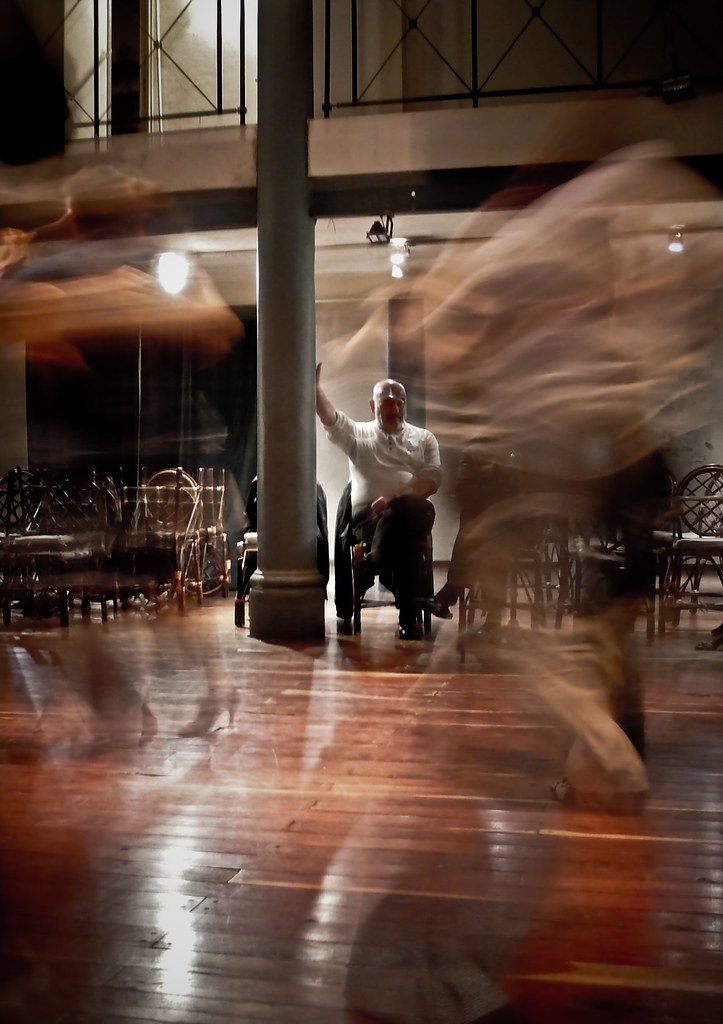
[foto by alex.tango.fuego]
Here is Janis Kenyon's letter to the editor on the subject of Milena Pleb's interview in El Tangauta No. 168 [July 2008]. Thanks to Mari over at My Tango Diaries for sharing this on Facebook.
http://jantango.wordpress.com/2010/03/06/the-art-of-the-cabeceo/
As I was reading, the first thing I noticed was this: "He may not have seen a woman dance with another man yet."
That's an important one for me, perhaps the most important.
99% of the time I won't invite a woman to dance unless I have watched her dance. What am I looking for? First and foremost - is she dancing close embrace? If her eyes are closed that always catches my eye - bonus points. I observe the nuances and character of her walk - leg extension, caressing the floor as she steps, collecting her feet, waiting for the lead.
Auto-boleos, excessive un-led embellishments or shoulder musicality are sure-fire deal killers for me. I'm probably missing out on some good dances, but that's just me. I find it difficult to get past that stuff and enjoy the dance. It's a distraction for me, distracting for my lead.
I'm way too selective/critical/picky in my invitations to dance. I freely and publicly acknowledge that. I try to work on that at every milonga I go to. That's the best I can do.
My experience in Buenos Aires was that cabeceo didn't work for me. Zero, zilch, nada, one rather large goose egg. My tango at the time was intermediate mediocre at best - so that was working against me. With porten~as, they generally won't respond to strange gringos - especially strange gringos, or I should say yanquis, who have a fucked up walk.
It worked just fine with European and American followers. Verbal invites worked with them, too. Verbal invites do not work, or at least didn't for me, with porten~as. Unless you are really good looking, or a really good dancer. Or unless you have had a personal introduction through a mutual friend. Then you are no longer a stranger from a strange land. That's my take on it.
The time-honored codigos of tango are important for us all to be learn and be knowledgeable about, incorporate them into our tango as best we can, and spread the good word.
We should all try to work on our cabeceo here in the U.S. - number one because it works - it's a proven method for non-verbal invitations. Number two - for when we make it back to Buenos Aires. Some day.

3 comments:
I mentioned this on Mari's blog... "Cabeceo" is non-existent in Chile. I'd love to try it someday though... As for you being picky when you dance, the list of things you look for in a woman before you ask her to dance is pretty good for my learning process, will take a mental note! =)
Thanks!
Thank you for your thoughts on this - and as always, for your honesty.
I also wait to see a leader's dance before I am "available" for cabeceo. Call me selfish - but I don't like surprises.
I must admit that when nuevo or open embrace leaders ask me to dance, my first thought is, "have you seen me dance?" I wonder if they noticed me dancing close embrace all evening - because some are very surprised that I'm not instantly embellishing like mad and I hesitate to follow certain large leads - like boleos etc. It means something when a leader has taken the time to watch a follower, learn something about her, before asking.
This is most important and relevant point made by Janis,
This article tells me that, although Milena Plebs has been an important figure of tango for many years, she doesn’t know very much about the milonguero codes. The stage is a different world from the milonga. The respect for the codes in the milongas is disappearing along with the milongueros.
Nowhere she suggests nor anybody else including yours truly that gringos should dream about becoming instant dancing porteños by doing monkey see, monkey do.
The reason for the codes in Buenos Aires is the result of a sociocultural phenomena and it has nothing to do with things to do in order to pass as a good tango dancer.
No matter how hard one tries to hide it with silly behavior, a tango dancing gringo will always be a tango dancing gringo.
Spend the time learning the techniques and the know how of the tango from the very few that actually know, and then dance the way you are, be yourself, and be happy you have learned a new skills. Nobody expects you to be anything else.
Post a Comment